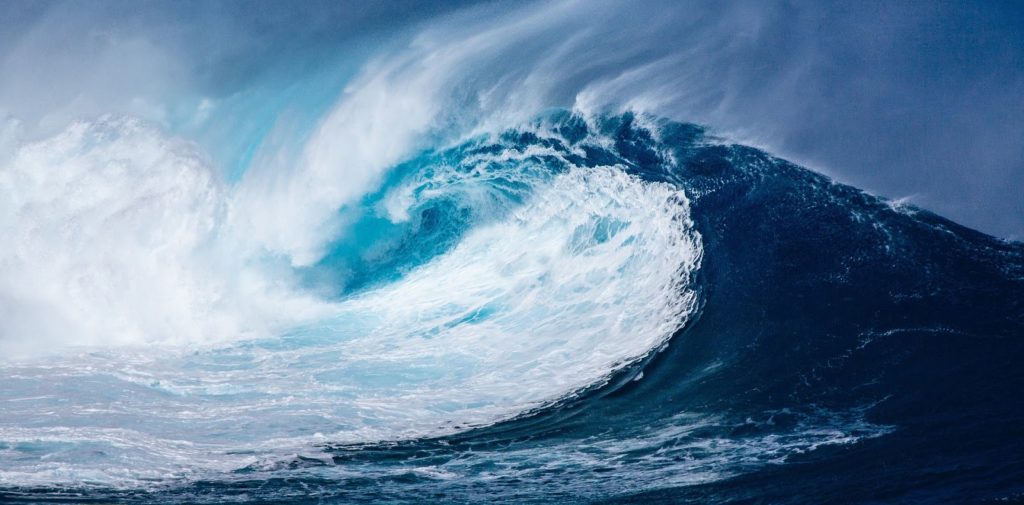Tsunami are among the most destructive natural events that happen on our planet. From the Japanese term meaning “harbor wave”, tsunami occur when large volumes of water are quickly moved about in the ocean, which can be driven by events like earthquakes and glacial calving (when pieces of a glacier break off and fall into the ocean). For instance, earthquakes caused the 2004 Indian Ocean tsunami that killed over 220,000 people as well as the 2011 Tōhoku tsunami that caused over 14,000 deaths in Japan (and triggered the cooling system failure at the Fukushima Daiichi Nuclear Power Plant).
Given the prevalence of human populations in coastal areas over time, it’s not surprising that tsunami have impacted human societies so greatly. However, little record has existed for the impact of tsunami to human populations in prehistory (before the development of written records). Now, new research from Professor James Goff, of the University of New South Wales, and colleagues published in the journal PLOS One suggests that an old fragment of a human skull might represent the oldest known tsunami victim on Earth.
The skull in question is known as the Aitape Skull. It was discovered in 1929 near the village of Aitape in Papua New Guinea. Originally believed to be of Lower Pleistocene age (~2.6 to 0.8 million years ago), further examination of the skull fragment in the 1960s showed that the remains were likely only several thousand years old (for instance, see this article by Arthur Durband and Jody Creel from Archaeology in Oceania). However, 50 years after the known age of the skull fragment was updated, James Goff and colleagues realized the environment in which it was found had not been reconsidered.
Originally, the Aitape Skull fragment was proposed to have come from an environment that was once a mangrove swamp that occasionally was covered with water at high tide. However, this new research used more modern methods to study the geology and chemistry of the rocks and soil where the skull was found and analyzed the glassy cell walls of microscopic marine organisms known as diatoms that were preserved in these ancient materials. The new results show that the environment where the Aitape Skull was found was much more likely a coastal lake setting that was hit at least once by a tsunami.
James Goff and his colleagues consider a few possibilities for the presence of the skull in these materials. They infer that the skull fragment either came from a burial in the area before the tsunami event in question, or the skull may be derived from an individual who was impacted by the tsunami. Although they can’t say for sure if this skull fragment really did come from what would now be the earliest tsunami victim, their new findings suggest that other archaeological sites in ancient coastal regions might benefit from a re-analysis of their geological setting. Tsunami may have been more important, and more devastating, to earlier peoples than has been previously considered.

This picture shows the location of Papua New Guinea (a), the study site on the island (b), a close-up view of the region where the skull was found (c), and the Aitape Skull bone fragment itself (the small scale bar is 2 cm). See the image in the paper by James Goff and colleagues for more information and details on the maps.
You can also read more about this intriguing re-interpretation here.


